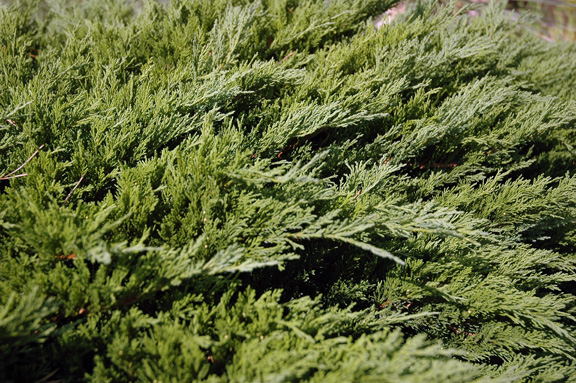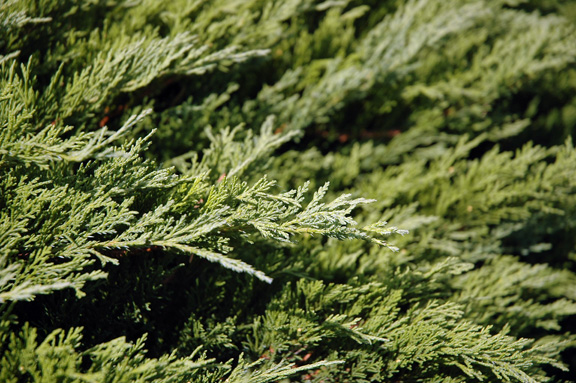
Woody > Juniperus > Juniperus scopulorum > Juniperus scopulorum 'Prostrata'
Juniperus scopulorum
'Prostrata'
Creeeping Rocky Mountain Juniper
| Family |
| Cupressaceae |
| Genus |
| Juniperus |
| Species |
| scopulorum |
| Cultivar |
| 'Prostrata' |
| Category |
| Woody |
| Type |
| Shrub (evergreen) |
| Pronunciation |
| USDA Hardiness Zone |
| 3 - 7 |
| Canadian Hardiness Zone |
| 3 |
| Temperature (°C) |
| -23 |
| Temperature (°F) |
| -10 |
| Height |
| 15 - 50 cm |
| Spread |
| 1 - 2 m |
Photographs
Description and Growing Information
Flowering Period
| General Description |
| A prostrate, low growing evergreen shrub with dark green foliage that holds its colour throughout the seasons. |
| Landscape |
| Providing colour to any garden year round, it is an excellent ground cover, low border or as an attractive edging. Fairly urban tolerant however does not take well to salt exposure. |
| Shape |
| Low and spreading. |
| Growth |
| Slow |
| ID Characteristic |
| A low spreading Juniper that is prickly and rugged in appearance. |
| Pests |
| Cedar-apple rust and Kabatina tip blight. Careful planning is required when choosing a planting location as Junipers are known to host diseases (cedar apple rust) that may affect surrounding species. Spider mites and cankers can be problematic. |
| Habitat |
| Horticultural origin. |
| Bark/Stem Description |
| Thin, exfoliating fibrous bark that is red-brown or grey-brown in colour. |
| Flower/Leaf Bud Description |
| Buds are very small and indistinct, green in colour and ovoid in shape. |
| Leaf Description |
| Scaled, 6 - 10 mm long on short branchlets, dull dark green to a brighter vibrant green, in pairs in an opposite arrangement along the branch. |
| Flower Description |
| Not very attractive, 6 mm, brownish or yellowish in colour. Formed on elongated shoots that bloom in the spring. |
| Fruit Description |
| A blue-black berry, 6 mm in size with a waxy coating. |
| Colour Description |
| Foliage is a dull to vibrant dark green throughout the season with the bark showing a red-grey-brown colour. Buds are small, green and ovoid shaped and it has small blue-black berries with a waxy coating. |
| Texture Description |
| Medium to fine, keeps its texture throughout the seasons. |
| Propagation |
| Difficult to root by cuttings therefore is frequently grafted. They may be stored for several weeks in high humidity at 0-5°C, should be grafted using the side veneer technique. The union should be covered with peat moss and kept at 25°C with 85% humidity allowing for 2-8 weeks healing time. |

